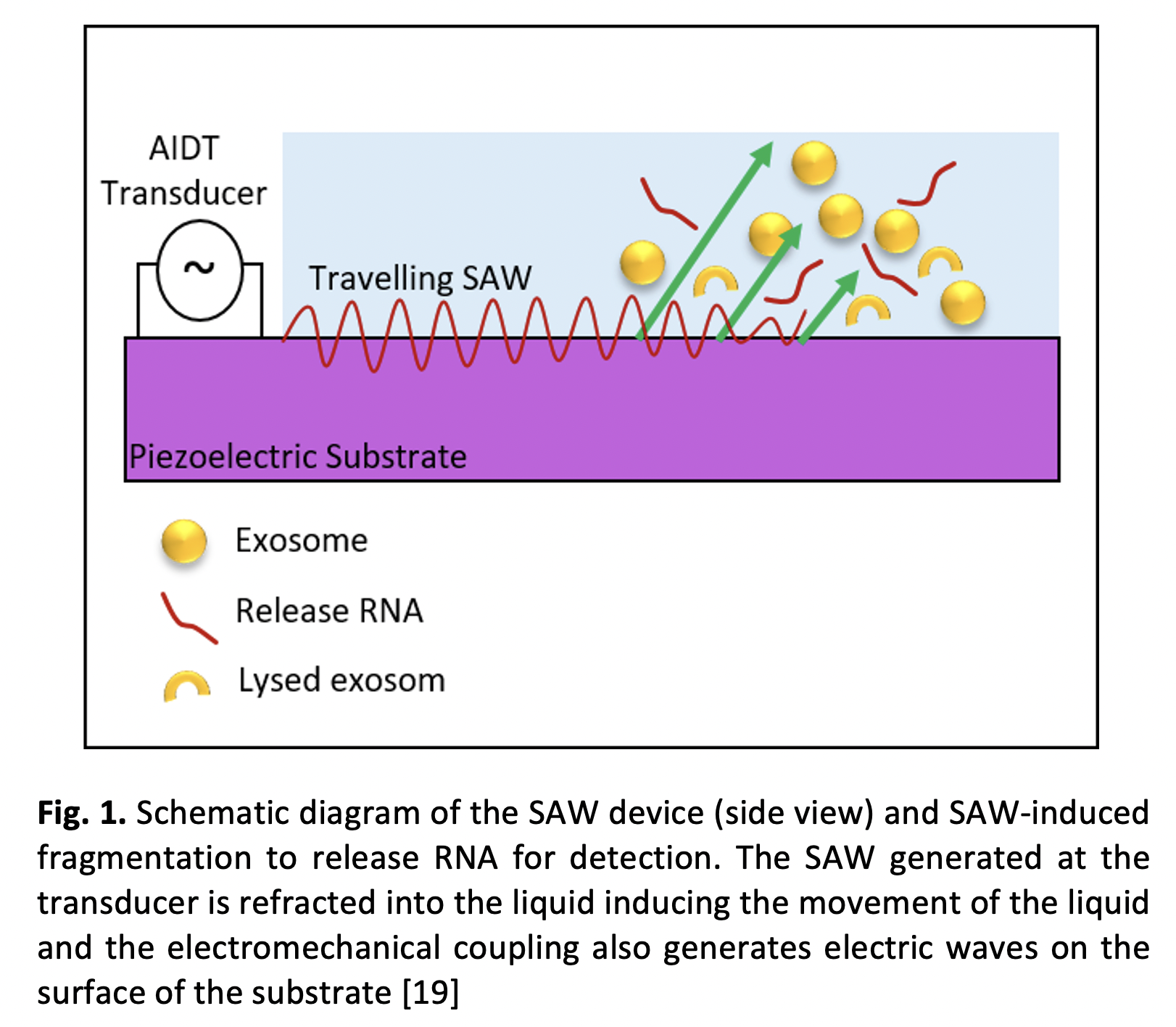Analysis of Extracellular Vesicles Lysing using Surface Acoustic Wave Resonator
DOI:
https://doi.org/10.37934/araset.28.3.1426Keywords:
Lysing, SAW, AIDT, microfluidic, resonatorAbstract
The integration of a Y-channel microfluidic system with an annular SAW device developed using MEMS technology has built an efficient platform for mixing and lysing of extracellular vesicles. The travelling SAW used in this study operating at a frequency of 50 MHz is capable of generating surface acoustic waves stream on a liquid sample inside a Y-chamber. At a height of 80µm the PDMS chamber and a liquid sample flow rate of 10µl/min can produce a mixing method that is able to generate gas bubbles that cause the occurrence of microcavities which are the agents of the extracellular vesicle lysing mechanism. This method of rupturing extracellular vesicles through cavitation techniques results in cell rupture through a combination of shear force and pressure changes without destroying proteins and nucleic acids. The Bradford assay is used to observe the increased presence of proteins resulting from the rupture of extracellular vesicles after exposure to acoustic waves. Based on the results, it can be concluded that the most optimal SAW exposure time and power is at 20dBM and 60 seconds. Through this test it can also be observed that a longer exposure period will generate heat which results in the degradation of the proteins that come out of the extracellular vesicles. It can be concluded that the results of this study prove that mechanical method of integrating an annular -SAW device and a Y-channel PDMS microfluidic chamber for micro-mixing, the analysis of biological cells and lysing mechanism can be achieved more effectively compared to conventional methods.Downloads

Downloads
Published
2022-11-30
How to Cite
Nazihah Zainal, Nur Mas Ayu Jamaludin, Muhamad Ramdzan Buyong, & Norazreen Abd Aziz. (2022). Analysis of Extracellular Vesicles Lysing using Surface Acoustic Wave Resonator. Journal of Advanced Research in Applied Sciences and Engineering Technology, 28(3), 14–26. https://doi.org/10.37934/araset.28.3.1426
Issue
Section
Articles




























